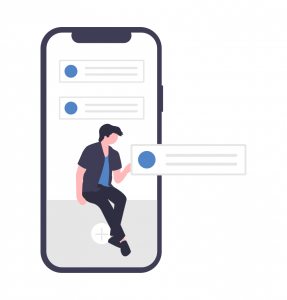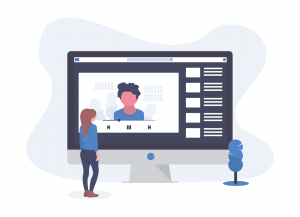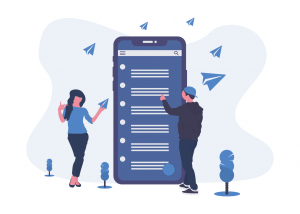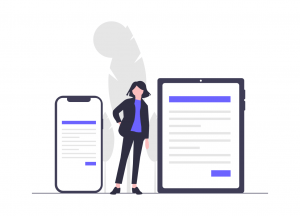10 tips to create the best micro-learning courses
According to studies by Alorica, by 2025, Millennials will make up 75% of the workforce and the average attention span for the generation would be 90 seconds. That’s when micro-learning comes in to save the day. According to the Association for Talent Development’s 2017 report named “Microlearning: Delivering Bite-Sized Knowledge,“ 81% of surveyed organizations are currently using or are planning to begin using microlearning to support their employees.

The question is, why are so many organizations interested in microlearning and why should you be interested in incorporating it into your business strategy as well?
The answer is simple. If micro-learning is done right, it can solve some of your biggest business challenges. It can make your organization successful – no matter what. The only key thing is doing it right.
How do you do that? How to make sure that you are looking up to your game and solving critical problems with the help of a micro-learning strategy? This is your ultimate guide for micro-learning. Look at some of the best tips you will ever need to create and bring life to micro-learning.

Top 10 tips to create the best micro-learning course:
1. The Results-First Model
JD Dillion came up with a simple method of ‘Results-First Model’ that guides you from ‘end to beginning’ rather than beginning to end that we see typically. Why do we bring new learning concepts? To figure out a solution. You find a solution to something when you a problem exists. Similarly, we must begin with the end in mind. Collaborate with your SMEs to answer 3 critical questions that JD Dillion lists:
- What is the measurable business goal you want to achieve?
- What will employees need to do differently in order to achieve this goal (behaviors)?
- What foundational knowledge is required to enable this behavior?
This process will help you narrow down parts of your solution that your firm needs, this will be the targeted information and knowledge for micro-learning needed to reach your goals. It will also automatically shorten the content needed.
 2. Separate ‘need to know’ from ‘nice to know:
2. Separate ‘need to know’ from ‘nice to know:
One of the biggest challenges faced when trying to take existing content down to microlearning level is not bombarding every piece of information available. Not everything ‘needs’ to be known. Separate bits of information that is absolutely crucial to know from information that is just nice to know but isn’t directly helping your employees and learners in finding real-life solutions to problems at work. The ‘need to know’ information must also be very easy to understand, while nice to know information can be available for on-demand later.
3. Use only relevant visuals

If you were planning to have just reams of text and text, you’re doing it wrong. The text takes way longer to read and remember. This is time wasted. Use other media forms like graphics, videos, animations and/or characters. And not just that, it’s important that all these elements and visuals are relevant, not distracting. Infographics are a terrific example to give a good chunk of information with visuals. And really short text.
4. Unclutter it
The less clutter you have in the design, the better. Dumping all information under one topic will cost you. If one topic has lots of information, the wise thing is to segregate it into small categories and segments. Put only the ‘need to know’ information in. Provide resources and links to ‘other’ information. You can either provide a downloadable link or show them a webinar. This doesn’t just apply to content however; it applies to the entire design. If your course requires 2 log-ins and 8 clicks to access, no one will do it. If it is not short and easy, they won’t use it. If the information does not clearly help them do their job better, they won’t do it. Period.
5. Include real-life examples
Yes, this applies in micro learning as well. Real-life examples and scenarios that clearly help your employees or learners to do their job better, will connect better as well. Use characters and scenario-based learning strategies that your employee is most likely to encounter at work. If the course helps them find a connection with the topic, the information and what they come across at work – you have succeeded in your micro-learning session. Real-life examples, short text and visual aids will make it all even better. This also helps them get more engaged because they are applying that information and putting it into practice. What helps in more engagement is the use of micro interactions.
- Get straight to the point with new concepts
- Have learners perform an action that shows that they have learnt so far
- Have them answer quizzes and receive stars

6. Personalize it to the learner
Give control to the learner. Let them plot their own way through the course. This is where micro learning wins from general eLearning courses. Learners can easily find what they need most while going through the course. This gives learners greater engagement, focus and motivation. It builds their interest as they go forth. Personalizing their training through a short course that is tailored for them will definitely apply better to the job.
7. Meet your learner’s needs
The learners, employees and audience come first. Make sure that your micro learning is actually useful to the learners. Concentrate on
- collecting learning resources that specifically address the learner’s chosen topic
- providing answers to the questions they may have
- making personalized diagnostics: to find out your learners strengths and areas for improvement
8. Decide on topics that are easy to break
This does not mean that you can only choose topics you can break into smaller pieces. What comes first is your learner, and their needs must be met first. Short and focused generally does well with micro learning. Your learners can choose to know what course and in turn what content and information they need right now. They can easily pick and learn what they need to. That is to say, use micro-learning for quick, targeted content. For more complex concepts, you will need to deploy longer training for foundational knowledge.

9. Give Answers
When you have a situation, the first thing is you realize that there is one. Then you look and seek answers. And then you find the solutions. This is the “3 S approach” called
- Situation: the problem.
- Seek: finding how to fix it.
- Solution: fixing it.
Microlearning content needs to help your learner go through the process, with engaging and digestible activities, and resources needed for their proper learning. For content ideas, find a meaningful problem in your business. What specific, measurable problem could you solve in order to show the value of a new approach? After figuring that out, apply a few basic microlearning principles. Put up a short video just telling what your employees need to know to fix this problem instead of giving them a big chunky detailed lecture.
10. Make micro learning available on multiple devices
It is safe to say that microlearning is mostly used by employees who travel a lot. They need to be able to access their information anywhere and anytime. This is also why micro-learning is becoming so popular. Your learners should have a good user experience whether they access the course on a laptop, mobile or tablet.

Conclusion
All in all, micro learning is a trend that is here to stay. The tips and strategies put together here will give a chance for your employees and learners to develop a habit of continuous learning, and it’s useful because they know exactly when to apply their knowledge for your business’s favor.
Is there something we missed? Do you have more tips to tell us? We would love to know!




